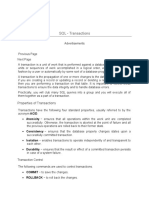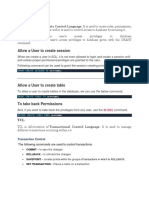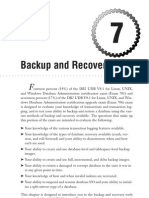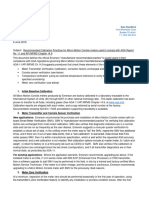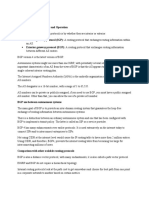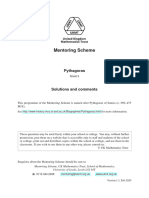0% found this document useful (0 votes)
22 views3 pagesDBS Lab 8
The document discusses transactions in database management systems. Transactions allow grouping SQL statements into atomic units of work that can be committed to permanently save changes or rolled back to undo changes. Transactions provide ACID properties like atomicity and isolation. The document also discusses using savepoints within transactions to roll back to intermediate points rather than the start of the transaction. It provides exercises to apply transactions and savepoints to an employees database.
Uploaded by
Shashank RautkarCopyright
© © All Rights Reserved
We take content rights seriously. If you suspect this is your content, claim it here.
Available Formats
Download as DOCX, PDF, TXT or read online on Scribd
0% found this document useful (0 votes)
22 views3 pagesDBS Lab 8
The document discusses transactions in database management systems. Transactions allow grouping SQL statements into atomic units of work that can be committed to permanently save changes or rolled back to undo changes. Transactions provide ACID properties like atomicity and isolation. The document also discusses using savepoints within transactions to roll back to intermediate points rather than the start of the transaction. It provides exercises to apply transactions and savepoints to an employees database.
Uploaded by
Shashank RautkarCopyright
© © All Rights Reserved
We take content rights seriously. If you suspect this is your content, claim it here.
Available Formats
Download as DOCX, PDF, TXT or read online on Scribd
/ 3


